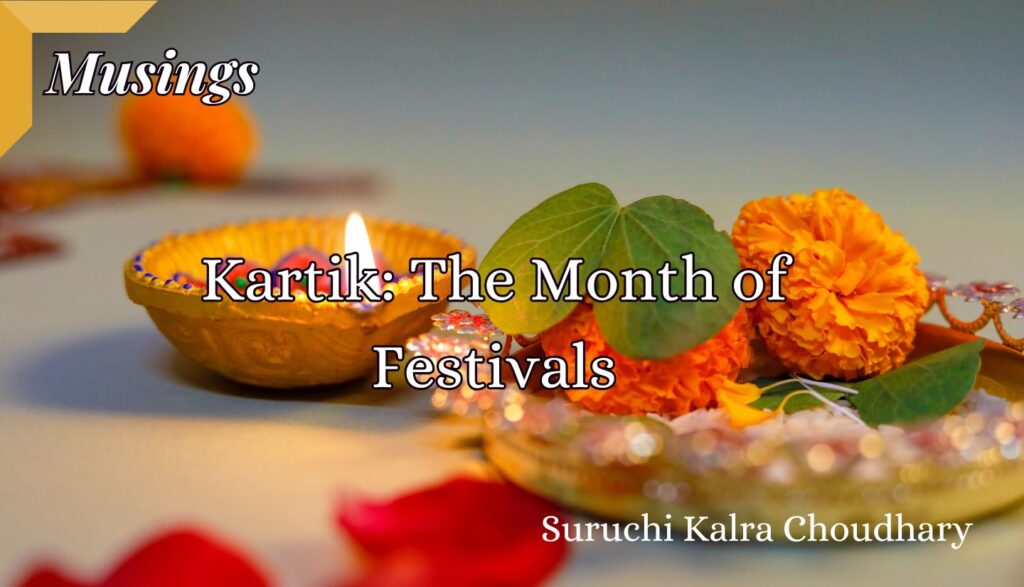
Many practices in Indian culture, often labelled as superstition, have a scientific reasoning behind them, and our itinerary is logically planned. After paying obeisance to our ancestors in the Pitripaksh and offering prayers /fasting of Navratri, the Kartik month ushers a period of feasting and festivities.
Sharad Purnima, the full moon night is celebrated in various cultures across the country. The sixteen kalas (phases) represent perfection and completeness. The weather turns cooler henceforth. Karwchauth celebrates marital love and seeks divine blessings. Women fast through the day praying for their husband’s well-being, follow regional traditions and deck up in all their bridal finery. Ahoi Ashtami is celebrated on the eighth day of the lunar month and mothers fast and pray for the well-being of their children. An appetizing aroma permeates as traditional delicacies are doled out. Fasting, feasting and dressing up.
Diwali, the festival of lights is celebrated in myriad forms across the subcontinent. It includes Dhanteras, Narak Chaturdashi, Lakshami Pooja, Govardhan Pooja, Annakut and Bhai Dooj. It symbolises the spiritual victory of dharma over adharma, light over darkness, good over evil and knowledge over ignorance. It brings community together and is a celebration of life. Celebrated on no moon day, the fireworks, candles, and light strings illuminate the locality. People worship Gods and Goddesses, exchange sweets and give gifts. The biggest life lesson to take away is no matter how dark the circumstances seem, in the end, there will always be light.
According to our Vedic scriptures, Lord Vishnu, the Preserver, stays in Stulok for four months, Chaturmas i.e. from Devshayani Ekadeshi in the month of Ashadha (June-July) to Devuthani Ekadshi in Kartik (October-November). The concluding phase of Kartik, the Dakshinayana is for devotional activities. After plowing, seeding, harvesting, it is time for inner harvesting. Devotional activities performed during this holy month are rewarded with greater spiritual results than usual. The final five days fast called the Vishnu or Bhisham Panchaka is dedicated to Bhishma Pitamah and is believed to help devotees please Lord Vishnu. The significance being that we should give up anger, desires, and be compassionate, merciful, and generous.
Kartik month concludes with Dev Deepawali on purnima, the day Lord Vishnu incarnated in his first avatar, Matasya. On this day, the Gods and Goddesses descend on earth, and bless the people with happiness and prosperity. Taking a dip in the holy river Ganges on this day can wash away all sins and bring salvation. Farmers celebrate and thank God for a good harvest. Lamps are lighted at homes, temples and floated in water.
Tradition says one must light lamps in the evening in the month of Kartik. Nature undergoes transition. The days turn shorter and the nights longer. It also indicates that you are multiplying the light in your life. The lamp is indicative of enlightenment, awareness, consciousness and ultimate liberation. All this is symbolised with the lamps that we light.
Suruchi Kalra Choudhary
